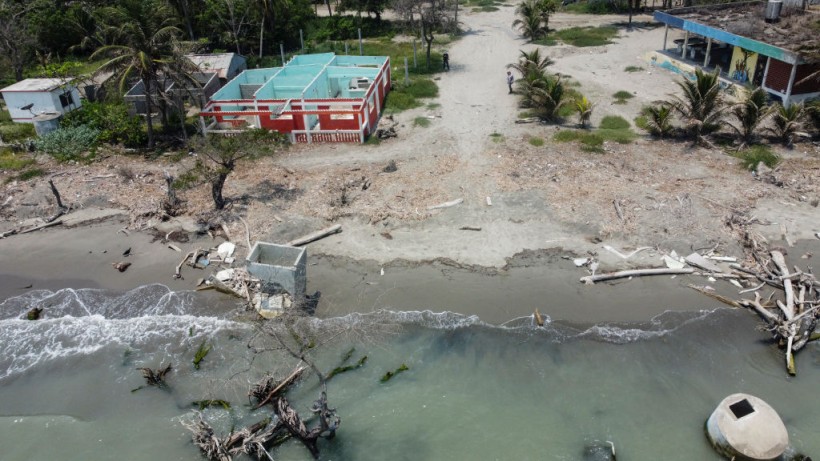Sea level rise is a major environmental, ecological, and societal problem as of the 21st century. In the context of anthropogenic climate change and global warming, the current water levels of Earth's oceans have significantly increased over the past several decades. One of the main causes of rising sea levels is the accelerated glacier melt in Antarctica and other icy regions of the world, caused by rising global average temperatures.
Sea Level Rise Threat

(Photo : Photo by YURI CORTEZ/AFP via Getty Images)
Based on prevailing scientific research, many coastal areas of island territories and even mainland countries are at risk of being submerged by the ocean by the middle or the end of the 21st century. Due to this threat, there have been various proposals to mitigate or prevent the impacts of rising ocean water levels. Some scientists even resort to glacial geoengineering by building barriers against sea level rise, recent reports say.
According to new research led by the University of Chicago, glacial geoengineering could be a viable solution when it comes to addressing the sea level rise threat. Researchers say that building barriers and the use of available technology in the arsenal of humanity could halt the melting of glaciers and ice sheets. Their findings were published on the university's website earlier in July 2024.
Despite the bold idea, there are many people who are opposed to building walls as a solution against rising sea levels. Over the past decade, some scientists have suggested constructing seawalls, which can prevent or decrease the impact of coastal flooding or erosion. Based on current developments, the notion of sea barriers has created contestation among the scientific community.
Also Read: New Links Between Greenhouse Gases and Sea Level Rise Found in the Amundsen Sea, West Antarctica
Climate Change and Glacier Melt
For decades, climate scientists have warned that the continuance of human-induced greenhouse gas emissions and fossil fuel burning will aggravate the natural process of the greenhouse effect. The latter is a phenomenon wherein the trapped gases in the atmosphere accelerate the absorption of solar heat. This process results in atmospheric and oceanic warming of the planet.
In the context of sea level rise, climate change is indirectly affecting glacier melt since Earth's temperature has increased by an average of 0.11 degrees Fahrenheit (0.06 degrees Celsius) since the year 1850. This is according to the National Oceanic and Atmospheric Administration, which reported in 2023 that most areas of the world are warming rather than cooling, affecting even the global oceans.
This means that the global warming effect is impacting icy structures like glaciers, ice sheets, and permafrost more than ever. In 2023, the United Nations reported that the rate of melting of the world's glaciers in 2022 spiked. The organization highlighted certain challenges in saving these natural structures.
If this trend persists, sea level rise will continue in the coming decades, threatening low-lying coastal areas such as Maldives and some other island nations.
Related Article: El Nino Phenomenon, Climate Change Increase Sea-Level Rise From 2014 to 2016, New Report Shows
© 2024 NatureWorldNews.com All rights reserved. Do not reproduce without permission.

